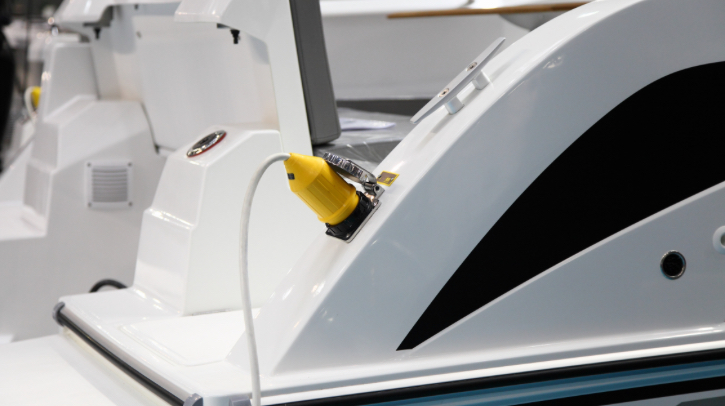Bureau Veritas Marine and Offshore has published a new technology report, named Maritime Electrification: Maritime Battery Systems and Onshore Power Supply, which calls for greater clarity regarding standardized safety regulations that will advance the development of maritime electrification technologies. The report explores how electrification technologies – specifically energy storage systems (ESS) and onshore power supply (OPS) solutions – can act as a viable solution to support maritime decarbonization.
Report findings
The report emphasizes that while OPS benefit from existing international standards, battery systems remain under-regulated despite growing safety concerns. It also points out that the risk of thermal runaway incidents within lithium-ion (Li-ion) battery technology poses a serious challenge to crew members.
Specifically, it underlines concerns about how fragmented and largely non-mandatory safety guidance is around ESS and that the risk of rapid, uncontrollable increase in battery temperature can lead to fires that are difficult to extinguish and pose a significant hazard to crew welfare.
BV’s technology report also highlights the dual opportunity presented by marine batteries and OPS systems. Battery adoption is reportedly accelerating, with over 1,000 battery-powered ships in service globally. Meanwhile, OPS systems are already supported by EU regulation, with FuelEU Maritime establishing the mandatory use of OPS systems for container and passenger ships docked at EU ports from 2030, followed by all EU ports with OPS facilities from 2035.
Overall, the technology report acknowledges that while existing policies and regulations have provided a foundation for safety and standardization, there is still work to be done at an international regulatory level to instill confidence in ESS and OPS. It says that comprehensive, enforceable international standards are needed to ensure the safe deployment of lithium-ion technologies at scale and pace.
Industry context
The launch of the technology report follows the International Maritime Organization’s (IMO) MEPC 83 outcomes, announced in April 2025, which set emissions reduction targets through 2040. However, according to Bureau Veritas, current projections indicate that the measures may fall short of the 2030 goals, prompting renewed focus on all viable low-emission technologies and electrification.
Classification societies such as BV are working to bridge the regulatory gap by establishing technical rules – such as BV NR467 Rules for the Classification of Steel Ships, which outlines technical and safety requirements for marine battery installations – to support the integration of these systems into maritime operations, as well as partnering with industry organizations such as the Maritime Battery Forum to develop voluntary safety guidance.
Matthieu de Tugny, president of Bureau Veritas Marine and Offshore, said, “Electrification technology is well established in the industry. However, in order to scale effectively and safely, ESS and OPS systems must be supported by robust, standardized and mandated safety regulations. Without clear international safety standards that regulate the integration of battery systems – particularly regarding fire prevention, crew training and emergency response – owners and operators may lack the assurance needed to integrate these systems into their decarbonization strategies. The industry must work collectively to bridge the current regulatory gap in order to ensure electrification technology achieves its potential in driving shipping’s decarbonized future.”
For more of the top insights into how advancing safety regulations are reinvigorating the maritime battery sector, read Foreship’s feature, here.



